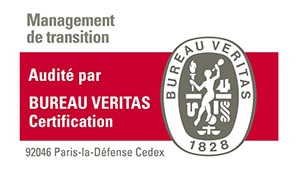At the end of a period of recruitment freeze due to the pandemic, hiring is on the rise again. However, finding the right candidates to meet the upturn in demand is not easy. Companies are faced with a mismatch between the skills offered on the job market and those they require. What solutions exist to help HRDs in turmoil in this context of talent shortage?
A widespread talent shortage in all sectors
Every business faces recruitment challenges at some point. Every business sector can be affected. The need for labor has increased in this period of economic recovery. The pandemic has simply acted as a catalyst for a phenomenon that began several years ago.
To relaunch its growth and meet new challenges, the company must recruit quickly and well. The issues are decisive for management positions. Choosing the right person to perform a senior executive function will be a guarantee of profitability. To achieve this, interim management appeals to many companies looking for flexibility, speed and efficiency. So many advantages that traditional recruitment does not offer with long and rigid processes.
If the building, catering, health are particularly affected, the information technology sector is even more so. Different ways of working have emerged, marking a lasting shift. It is now up to companies to adapt and make up for the shortcomings revealed during the health crisis. These changes require the application of innovative digital methods and the optimization of organizational levels. To attract the right profiles and retain talent within the company, HR managers play a key role.
An HR department mobilized internally to counter recruitment difficulties
Why seek to recruit talent from outside when you can take advantage of your internal resources? The first solution is to take stock to better identify the skills of its employees. The HRDs are the strategic partners of these changes.
Peaceful human management is conducive to the development of future skills. If in situations of economic crisis, social plans cannot always be avoided, good practices can remedy this. For operational implementation, a new vision, external to the institution, often gives the required impetus. An interim manager recruited for the occasion provides essential support. A mission of a few months carried out in synergy with the HRD will suffice to meet this need. His experience of similar situations saves valuable time.
In addition to organizational constraints, there is the need to invest in the image of the company. To avoid a shortage of talent, the work of the HRD also consists of uniting the teams. Developing the culture and internal relations, ensuring the well-being of employees, retaining and attracting talent. The employer brand establishes the reputation of the company. Employees are increasingly demanding on the quality of social relations, flexibility and training plans. Management then has an essential place within organizations, especially the most complex ones.
Mobility no longer frightens the vast majority. It is therefore necessary to seek the contribution of good experiences to employees and not to neglect the effect of attractiveness. Employees are their company’s best ambassadors.
New solutions to help human resources to hire
In the absence of sufficient qualified personnel in the company, the HR manager must draw from his pool of potential candidates. If the company communicated on its activities and ensured its good reputation, it was able to build up a file of candidates. Recruitment is made easier.
This pool of profiles is essential for anticipating immediate and future needs. To do this, digital tools are becoming the essential support for human resources. Big data makes it possible to better understand career paths and expertise. In the long term, it thus satisfies the employees and the requirements of the market. Algorithms allow better management of human resources. New technologies explore professional social networks and databases with CVs. They then improve the search for relevant profiles.
Despite high-performance digital resources, hiring remains slow at all levels of the company. Management positions are the most time-consuming in a recruitment process. In this time of tension, employing a manager for an interim mission is a quick and effective alternative. It leaves time and the possibility of finding the ideal profile while ensuring the sustainability of the company.
Recruitment methods have undergone considerable changes in recent years. The shortage of skilled labor forces managers and HRDs to innovate and encourage social mobility. Together, they must think about new methods of hiring and organization.






